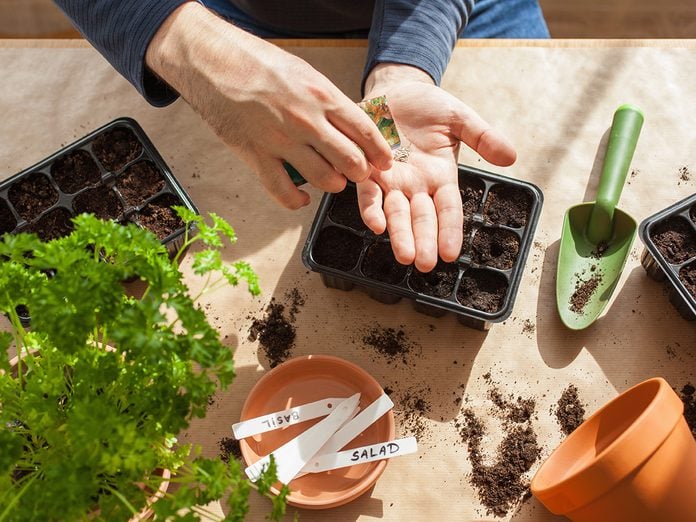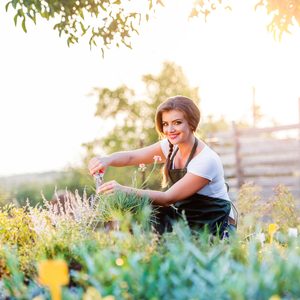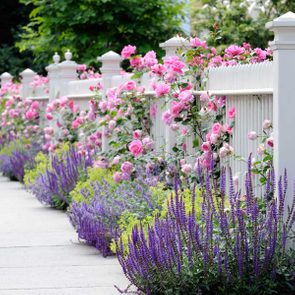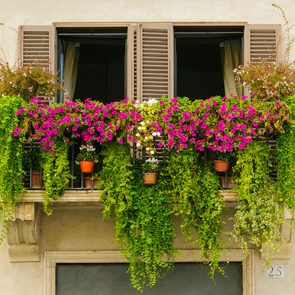10 Vegetables You Should Start Indoors

There may still be snow on the ground, but that doesn't mean you can't start preparing for your vegetable garden!
Broccoli and cauliflower
If you like broccoli or cauliflower, consider starting these vegetables inside. The Clemson Cooperative Extension notes these two vegetables are easy to transplant, so when the time comes to move them outside, they’ll be hearty enough to survive cooler soil temperatures.
Tomatoes
Tomatoes are a favourite among gardeners, and there is such a wide variety to choose from. The University of California Master Gardener Program notes tomatoes are a good choice for starting inside because they can be transplanted with few complications. (Don’t have a green thumb? These hacks can revive almost any dead plant.)
Lettuces
Salad lovers rejoice! Texas A&M AgriLife says lettuces are a good option for transplanting because this crop can tolerate cooler soils, thus will continue to sprout even if the soil outside is cool during the late weeks of spring.
Peppers
There are some vegetables that thrive in hot weather, and peppers—both sweet and hot—fall into that category. If you’re looking to grow peppers and don’t want to wait until late in the summer to enjoy them, start them inside. The National Gardening Association notes frost can damage pepper plants, so to combat this, get them started inside and wait until all danger of frost has passed before transplanting. (First-timer grower? Try these 10 simple tips for growing a vegetable garden—anywhere!)
Beets
If you have access to fluorescent lights, the University of Maryland Extension suggests starting beets indoors. Beets are a good choice because as a root vegetable, they transplant well. The extension notes other good options for growing indoors with the help of fluorescent lights are kale, onions, leeks and beans.
Celery
The National Gardening Association says celery can be a challenging plant since it has such a long growing period—130 to 140 days of mostly cool weather. The association says it’s best to start celery seeds indoors 10- to 12 weeks before the last frost. When the seedlings reach four- to six-in. high, they can be transplanted to the garden a week or two before the last frost date. (Learn about the low-light plants that thrive in near darkness.)
Cabbage
Cabbage, a cool-weather-loving vegetable, benefits from a longer growing season, so start it inside four to six weeks before transplanting. Seed Savers Exchange says you can then transplant the cabbage seedlings outdoors, just before the last frost.
Cucumbers
While cucumbers (shown above) don’t like to have their roots distributed, which can make them tricky to transplant, Burpee notes it’s worth the risk to start a few cucumber plants inside if this is one of your favourite garden vegetables. Whether you’re growing them for salads or for pickling, start cucumber seeds inside about three weeks before setting them outdoors. Just make sure the outdoor soil temperature is at least 60 degrees and all danger of frost has passed. (Don’t miss the 13 things you should know before starting a garden.)
Eggplant
Because eggplant has such a long growing season, Seed Savers Exchange says it’s a vegetable that does well when started indoors. The company says it’s best to sow eggplant indoors seven to 10 weeks before transplanting outside, then transplant outside four to six weeks after the last frost, into a warm and sunny location. Make sure outdoor soil temperatures are at least 13 C before transplanting outside.
Corn
While you shouldn’t be in a rush to plant sweet corn in the garden, you can get a jump-start on the season by starting the seeds indoors. The National Gardening Association says you can start corn plants indoors in pots. When the seedlings are a few inches tall, transplant them to your designated garden spot.
Next, save time and money by trying these gardening shortcuts.






